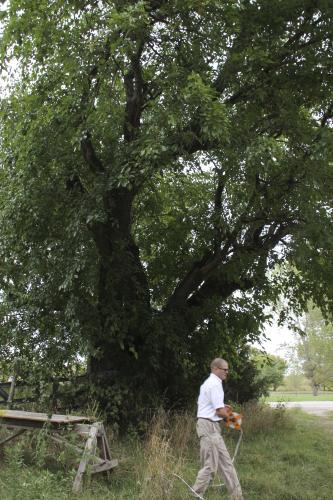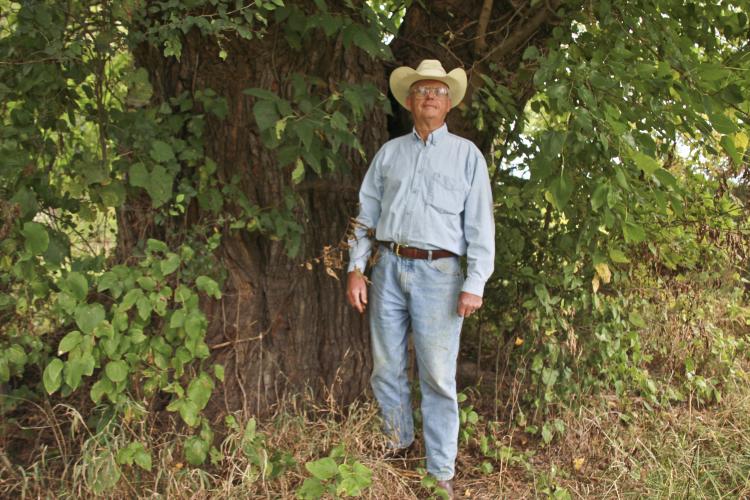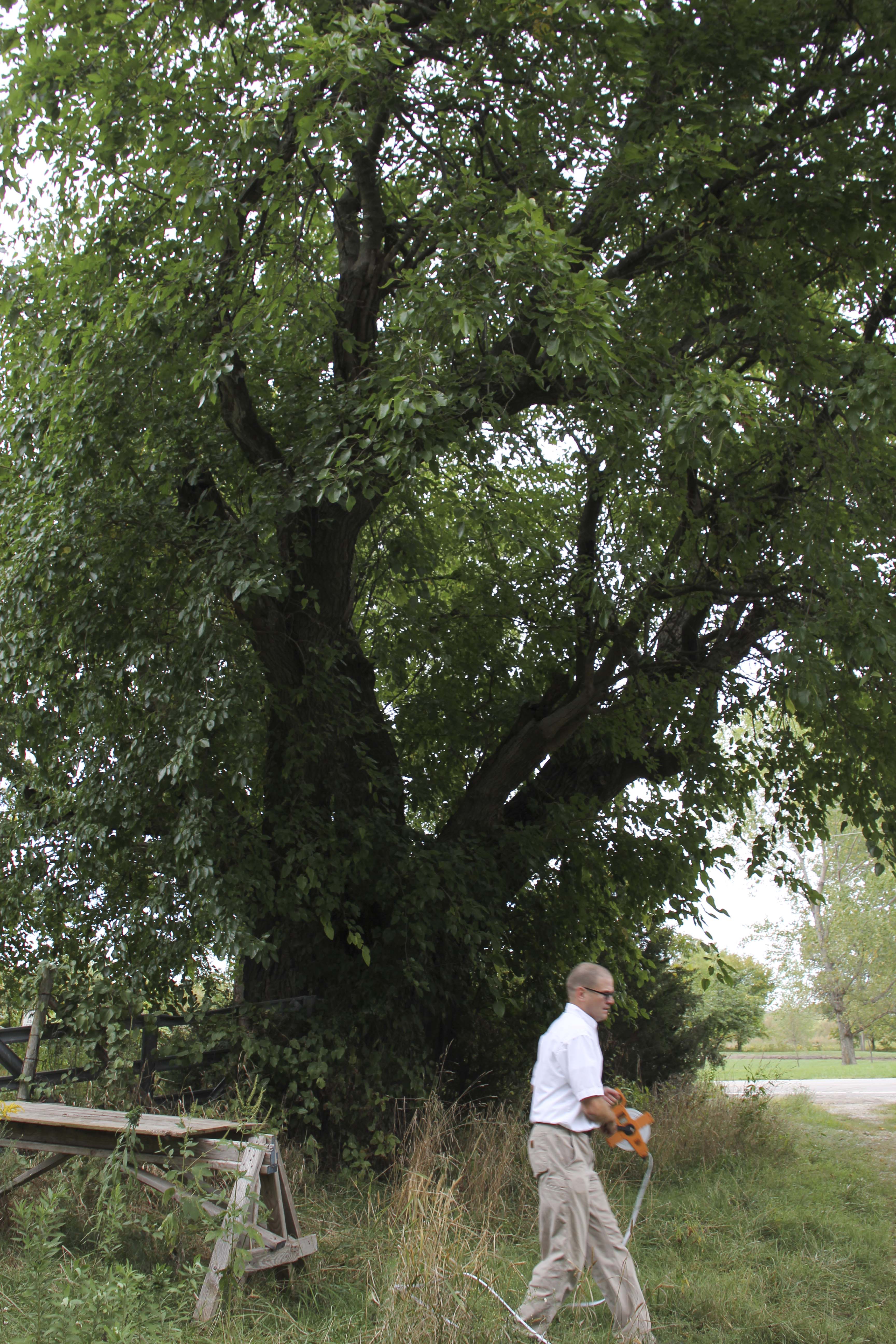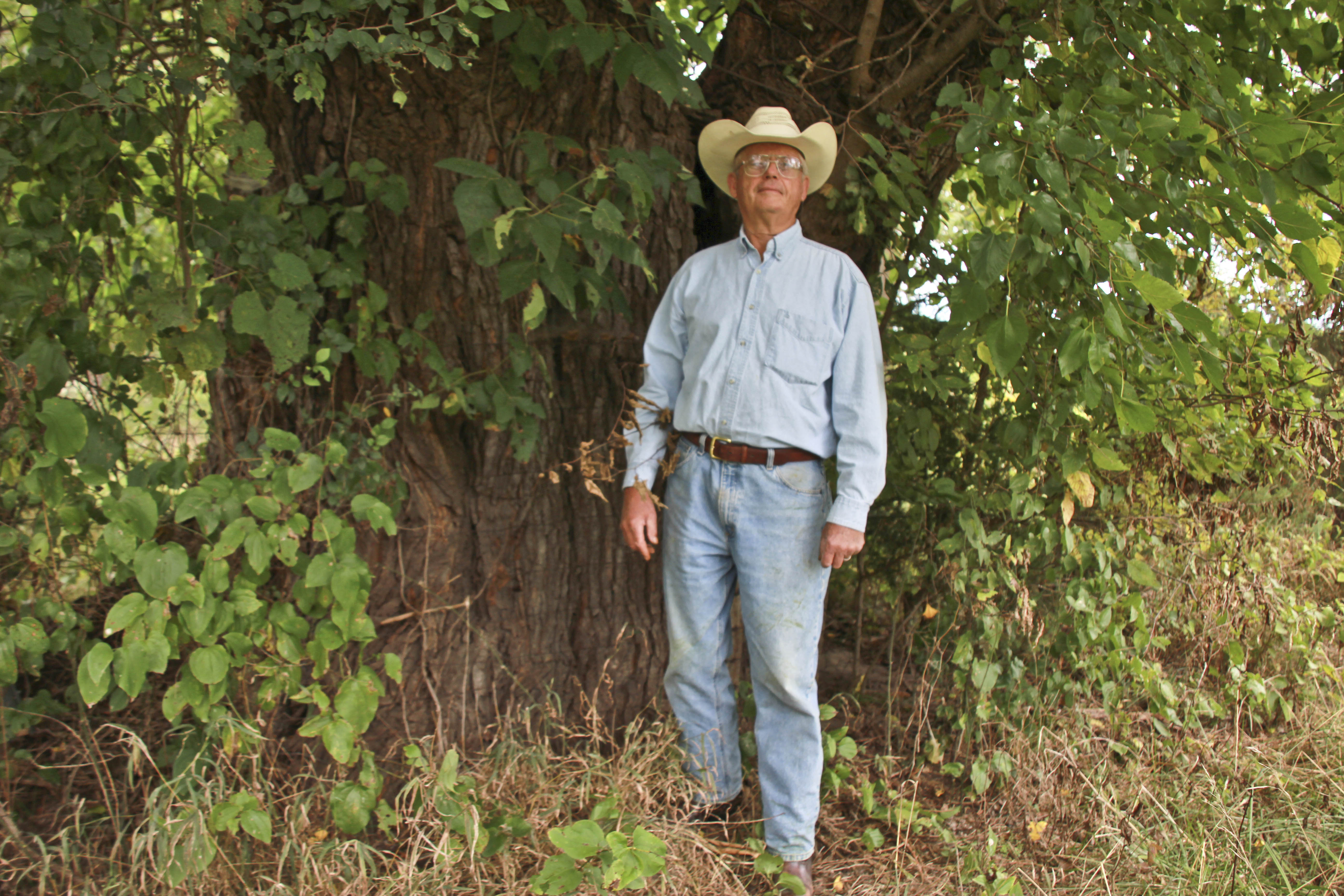
Xplor reconnects kids to nature and helps them find adventure in their own backyard. Free to residents of Missouri.


































Stay in Touch with MDC news, newsletters, events, and manage your subscription

Xplor reconnects kids to nature and helps them find adventure in their own backyard. Free to residents of Missouri.

A monthly publication about conservation in Missouri. Started in 1938, the printed magazine is free to residents of Missouri.




PLEASANT HILL, Mo -- Philip Moore knows trees because he’s grown and grafted them for years, especially nut trees. Now he can claim a state champion white mulberry tree too.
The tree towers over a farm fence on Pleasant Hill’s southern boundary, off Cardinal Road. A tape measure stretched 23 feet around its girth at a height 4.5 feet above ground level, according to measurements taken by Missouri Department of Conservation (MDC) Urban Forester Chuck Conner. The tree is 48 feet tall with an average crown width of 57 feet.
“You are looking at a new state champion,” Connor told Moore after measurements were taken recently.
MDC foresters use a formula with combined measurements to determine the largest overall size of trees in the record books. Trees with the most total points are the champs.
The Cass County specimen of white mulberry (Morus alba) is the new champ for that species, with 338 points. That beats the old record holder in nearby Lafayette County, which had 284 points.
“This feels great,” Moore said. “I’d like to know if they planted it or if it just came up? There was an old house on this site built in 1884.”
The tree likely came up on its own in the fence line, Connor said. But it’s also possible that it was planted as a fast-growing shade tree.
White mulberry trees are native to China. But they were brought to the southeastern United States in Colonial times in a failed attempt to start a silk industry. They are the preferred host for the Chinese silk worm. But the trees can also be prolific berry producers with white or sometimes reddish or blackish fruit. Those berries carry seeds, and wildlife eating the fruit and spreading the seeds caused white mulberries to become naturalized in the United States.
Missouri is also host to the native red mulberry (Morus rubra) which has blackish berries when ripe. In 1804, explorers William Clark and Meriwether Lewis noted in their journals that black bears were feeding on ripe mulberries when they passed up the Missouri River through the Kansas City area.
The berries of both red and white mulberries are edible for humans. Hybrid trees from cross pollination between the two types also occur.
Moore has never seen fruit on his champion white mulberry. Sometimes fruitless male varieties were planted by people wanting shade but not the mess of ripe berries on the ground, although old age could also cause the tree to be fruitless.
The tree will reign as white mulberry champion as long as it stands alive or until a larger one is found. The age is undetermined, but it’s undoubtedly been growing for many decades and the trunk is beginning to split in upper reaches where huge main branches begin spreading out.
A list of Missouri state champion trees is available at http://mdc.mo.gov/discover-nature/habitats/forests/missouri-state-champion-trees.
Moore, who lives at Pleasant Hill, will now have a tall and wide tale to tell at tree gatherings. He’s the current president of the Missouri Nutgrowers Association, a past president of the Missouri Walnut Council and active in other tree growing organizations. He noticed the tree several years ago and thought it might be a champion. He was right.